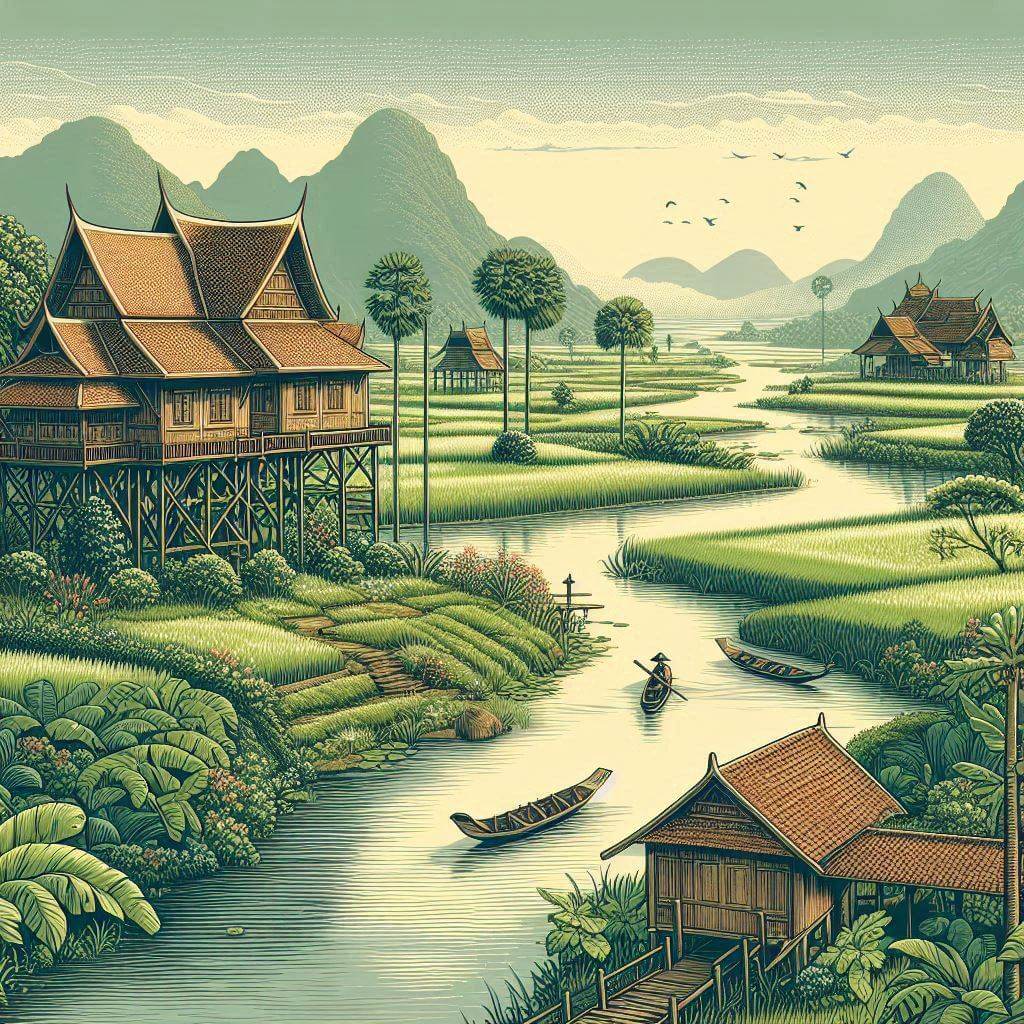The flag of Thailand, known as the Thong Trairong or Tricolour Flag, consists of five horizontal stripes of red, white, blue, white, and red, with the central blue stripe being twice as wide as the others. This striking design encapsulates the nation's core values and historical legacy.
Thailand information
| National Flag Day | September 28 |
| Sovereign state | Yes |
| Official name | Kingdom of Thailand |
| Capital | Bangkok |
| Population | 69,518,011 |
| Area | 513,120 km² |
| Currency | Thai baht (THB) |
| Language | Thai |
| Continent | Asia |
| Region | Southeast Asia |
| Subregion | Mainland Southeast Asia |
| Borders | Myanmar, Laos, Cambodia, Malaysia |
| Timezone | Indochina Time (ICT) UTC+7 |
| Calling code | +66 |
| Top-level domain | .th |
History of the Thai Flag
 The current Thai flag was officially adopted on September 28, 1917, by King Vajiravudh (Rama VI). However, its history dates back to 1782 when King Phutthayotfa Chulalok (Rama I) established the Chakri dynasty. The original flag was plain red, symbolizing the nation. Over time, the design evolved to incorporate white and blue stripes, with each modification reflecting significant changes in Thailand's political and cultural landscape.
The current Thai flag was officially adopted on September 28, 1917, by King Vajiravudh (Rama VI). However, its history dates back to 1782 when King Phutthayotfa Chulalok (Rama I) established the Chakri dynasty. The original flag was plain red, symbolizing the nation. Over time, the design evolved to incorporate white and blue stripes, with each modification reflecting significant changes in Thailand's political and cultural landscape.
Symbolism and Design of the Thai Flag
The Thai flag is rich in symbolism, representing the three pillars of Thai society. The red stripes symbolize the Thai nation and the blood shed by Thai people to maintain the country's independence. These stripes embody the spirit of courage and sacrifice that has defined Thailand's history.
The white stripes represent the purity of Buddhism, the predominant religion in Thailand. They also symbolize the moral and ethical principles that guide Thai society, emphasizing the importance of righteousness and spiritual well-being.
The central blue stripe, which is twice the width of the other stripes, represents the monarchy. This prominent placement and size underscore the crucial role of the Thai royal family in unifying the nation and preserving its cultural heritage. The blue color also pays homage to Thailand's former name, Siam, as it was the color of the royal standard.
Usage and Significance of the Thai Flag
 The Thai flag is a ubiquitous symbol of national pride and unity. It is prominently displayed on government buildings, schools, and private residences throughout the country. The flag plays a central role in national celebrations such as Thai National Day (December 5th, which is also the birthday of the late King Bhumibol Adulyadej) and Constitution Day (December 10th).
The Thai flag is a ubiquitous symbol of national pride and unity. It is prominently displayed on government buildings, schools, and private residences throughout the country. The flag plays a central role in national celebrations such as Thai National Day (December 5th, which is also the birthday of the late King Bhumibol Adulyadej) and Constitution Day (December 10th).
In schools, students participate in daily flag-raising ceremonies, fostering a sense of patriotism from a young age. The flag is also used to honor the monarchy and to commemorate important historical events in Thai history. In international contexts, it represents Thailand at diplomatic events, global sports competitions, and cultural exchanges.
Interesting Facts About the Thai Flag
- Thailand is one of the few countries in Southeast Asia that was never colonized by European powers, a fact that is a source of great pride and reflected in the continuous evolution of its flag.
- The Thai flag is locally known as "Thong Chat" or "Thong Trai Rong", which literally translates to "tricolour flag."
- The proportions of the Thai flag are precisely defined: the total width is 6 parts, with each red stripe being 1 part, each white stripe 1 part, and the central blue stripe 2 parts.
- In 1916, when King Vajiravudh saw the flag hanging upside-down, he decided to create a symmetrical design to avoid such mistakes, leading to the current flag design.
- The Thai flag shares similar colors with the flags of Costa Rica, North Korea, and France, although their designs and symbolism differ significantly.